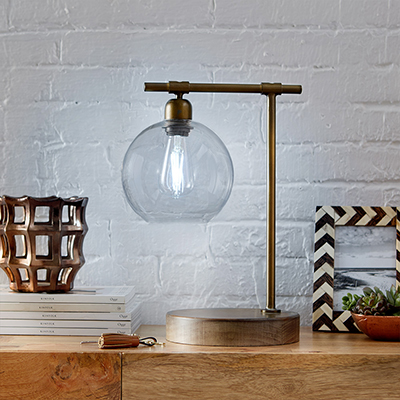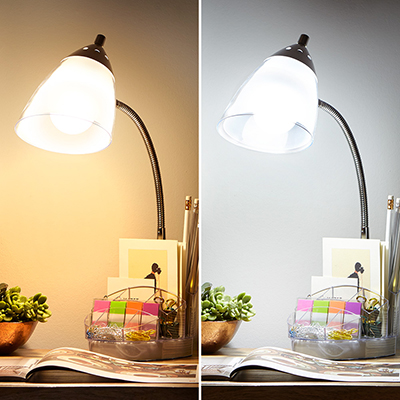Daylight Bulbs vs Soft White Bulbs
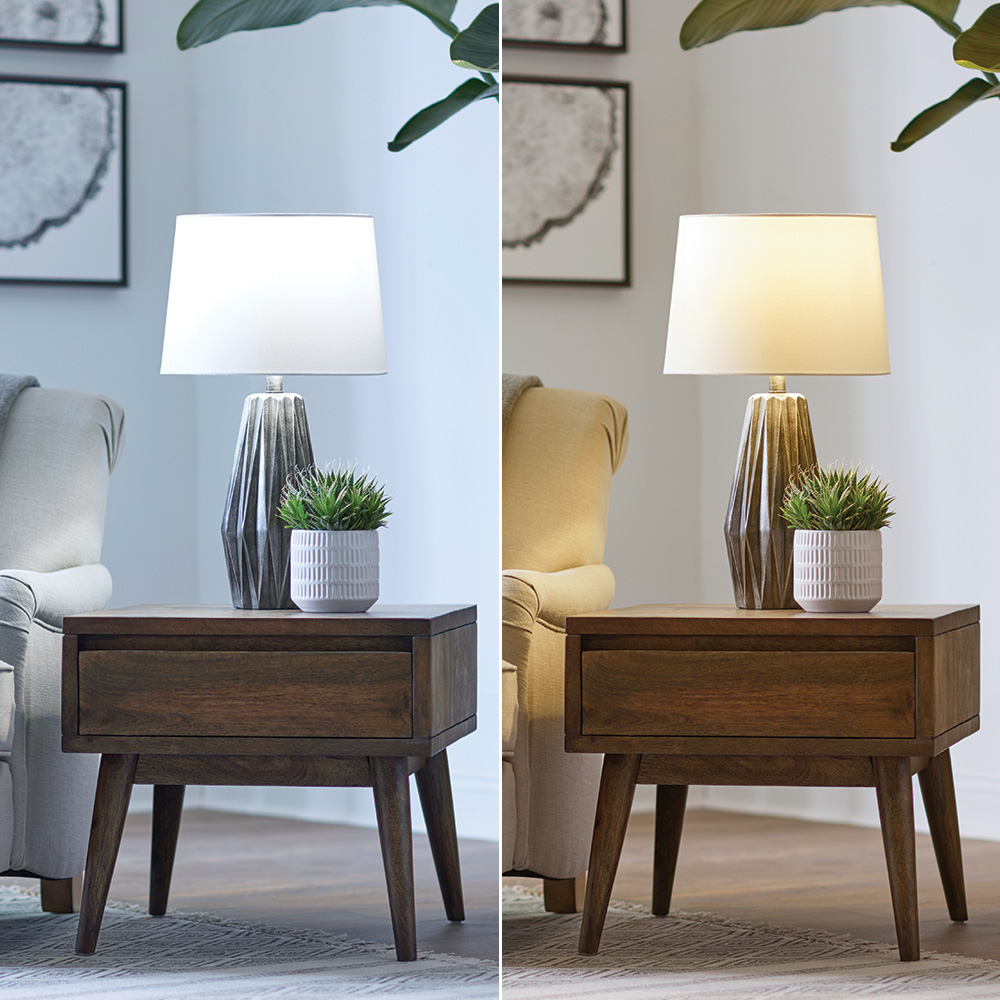
Last updated September 7, 2023
Set the scene in every room of your home when you choose the right light bulbs. In your home, you need bright light to work, cook and clean. Warm light is well suited for entertaining and relaxing.
Get to know the differences between daylight and soft white bulbs to select the best light bulbs for your space.
When you shop for light bulbs, you can choose between traditional incandescent bulbs or energy-saving LED bulbs. In this guide, you’ll learn about daylight vs. soft white bulbs. You'll also find tips on how to select the ideal light bulb for each room in your home.
Table of Contents
LED and Incandescent Light Bulbs
Light Bulb Brightness
Daylight Bulbs
Soft White Bulbs
LED and Incandescent Light Bulbs
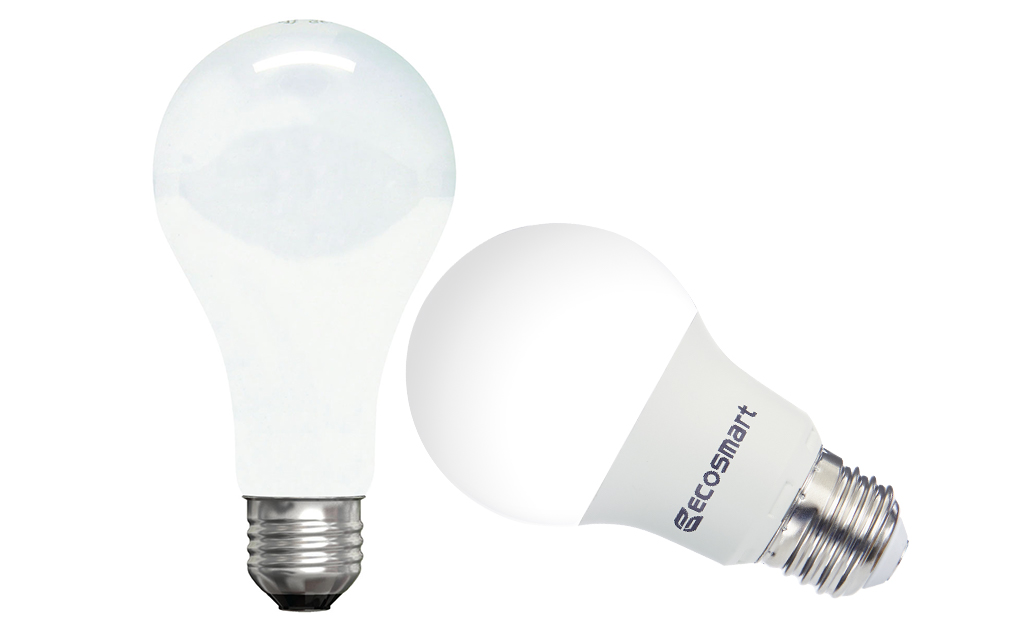
Incandescent bulbs were the standard light bulb for years. However, LED lighting is increasingly popular for both energy savings and environmental friendliness. LED bulbs are more efficient and last longer than incandescent light bulbs.
“LED” stands for light-emitting diode. LED light bulbs work by having an electrical current pass through a semiconducting material, the diode. The tiny diodes within an LED bulb cast light when electricity is applied. This technology doesn’t rely on heat to produce light and has greater energy-efficiency than incandescent bulbs.
Traditional incandescent bulbs have a thin metal filament that heats up as electricity passes through it. When heated enough, the filament glows to produce light.
These bulbs can get quite hot during use.
LED bulbs are energy efficient and also low maintenance. Because they don’t have a filament that will burn out, LED bulbs have a lifespan of more than 10 years.
Light Bulb Brightness

There are a few terms to keep in mind when you shop for light bulbs. Traditional incandescent bulbs are categorized by watts. If you’re looking for a brighter incandescent light bulb, select a higher wattage in the bulb.
For LED bulbs, you need to note the lumens. Lumens refers to brightness, and the higher the lumens, the brighter the bulb.
LED bulbs have a Kelvin number that indicates the color temperature from warm to cool.
Warmer bulbs have the lowest numbers on the scale, while the cooler lights are at the upper end of the scale. For example, the warmest colored light bulbs have a Kelvin number around 2,700 and the coolest blue light is at 6,500.
Both incandescent and LED bulbs offer soft white and daylight options. Consider the room where you will use the light bulbs to offer the best light in your home.
Dimmers allow you to change the intensity of light in a room. You can use a dimmer switch for overhead lights. A plug-in dimmer can be used with a lamp. In addition to lighting flexibility, use a dimmer can help you save energy. With a dimmer, a light bulb can be used for a longer period of time.
Some LED bulbs allow the color temperature to be easily changed. With smart light bulbs, you can control the bulb’s appearance with an app on your phone or tablet. Some smart bulbs also offer the option of scheduling light to look a certain way at a particular time. When you connect smart light bulbs to your home network, you can control them with your voice.
Daylight Bulbs
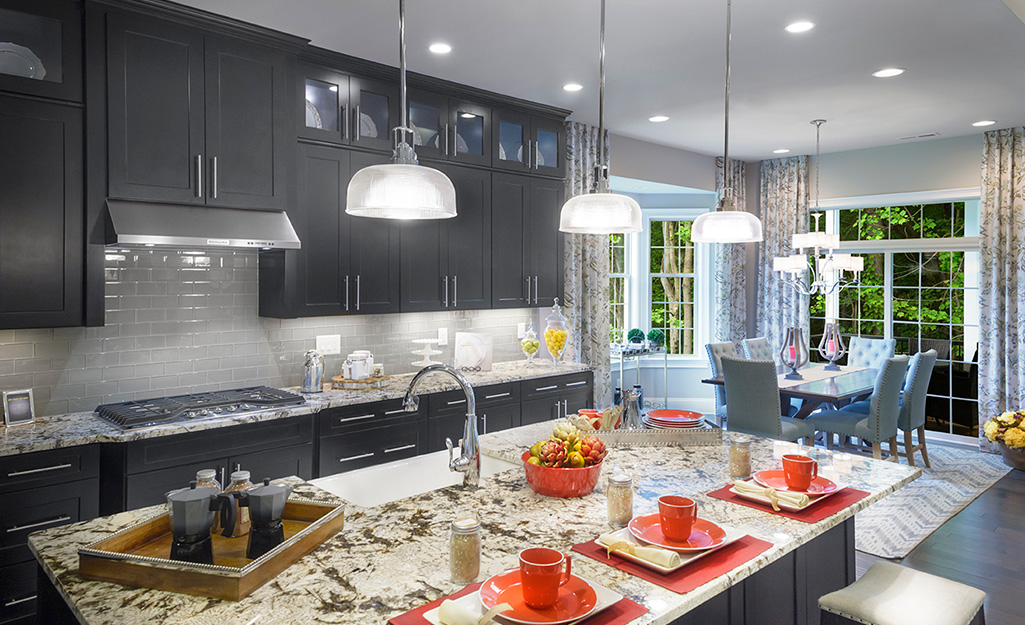
For vibrant light to work in, choose daylight bulbs. These bulbs emit a bright, cool light that is close to the sun’s natural light. You need bright daylight bulbs in rooms when you’re reading or working on projects like cooking and crafting. Daylight bulbs are ideal for focused task lighting in rooms like kitchens and bathrooms.
The cool light of daylight bulbs has a modern feel compatible with clean lines and minimalism.
Daylight bulbs are a good choice for kitchens, bathrooms and home offices. Additionally, daylight LED light bulbs can brighten windowless spaces like basements that don’t typically get natural light. This color temperature can enhance cool color schemes featuring blues, greens, blacks and greys. Daylight bulbs can be too harsh for some rooms, however.
Soft White Bulbs
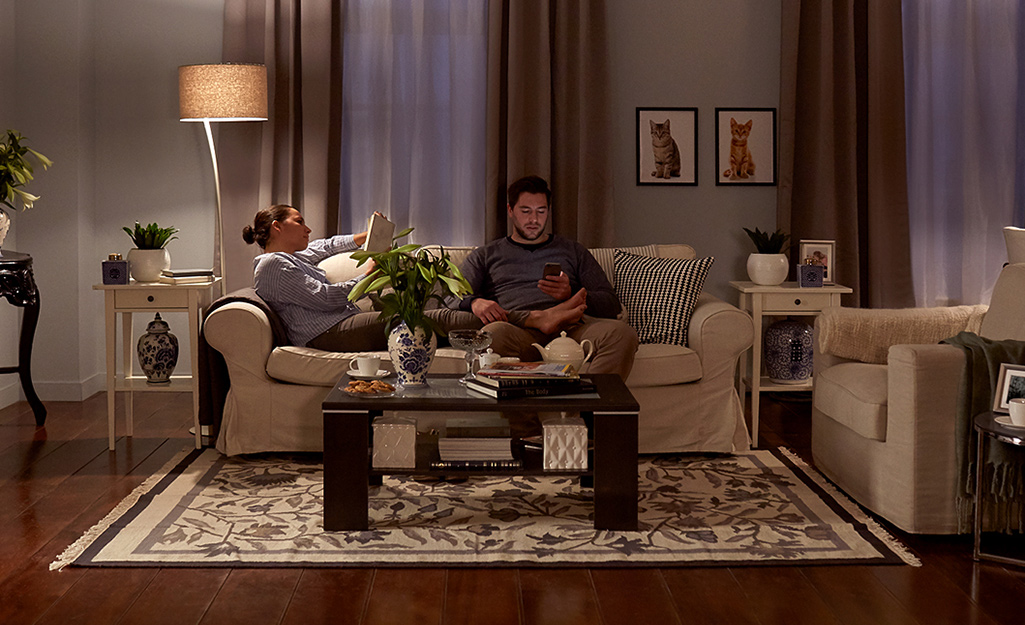
Soft white bulbs project a warm golden light ideal for rooms made for relaxing. Use soft white bulbs in fixtures in living rooms, dining rooms and bedrooms for an easy, comforting atmosphere.
The warm light of soft white bulbs is considered very traditional. It may remind you of the glow of a campfire or lantern.
This color temperature goes well with warm color schemes, such as reds, yellows and oranges. Soft white light also pairs well with wood. For rooms with hardwood floors, wood cabinets and other wood features, soft white bulbs may be a good fit.
When you’re deciding between daylight vs. soft white bulbs, consider which room they will be used in. Getting the right color temperature for each room in your house may take some experimentation. You might want to try several bulbs of different color temperatures to see which ones look best.
Ready to get new light bulbs for your home? The Home Depot delivers online orders when and where you need them.






